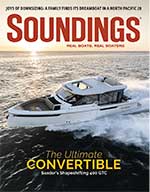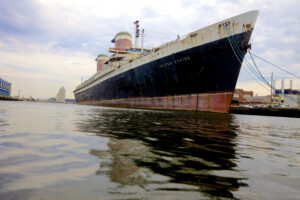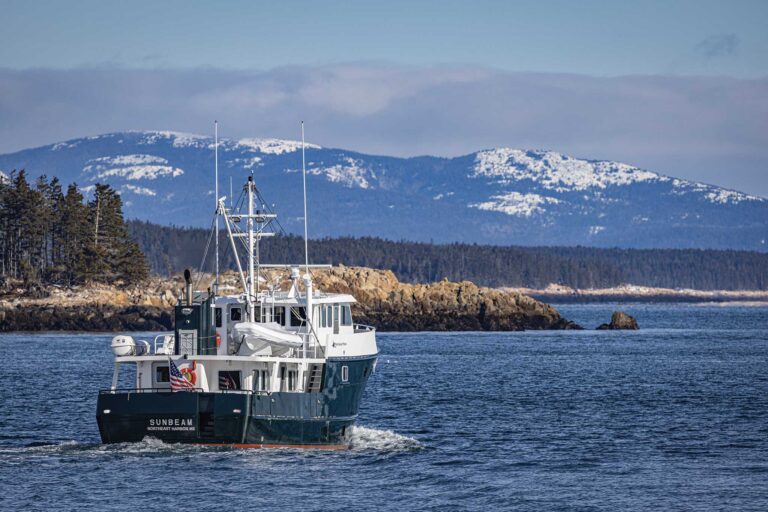Daniel Harding, the editor of Soundings’ sister publicationPower & Motoryacht, recently traveled to Volvo Penta’s test facility outside Gothenburg Sweden to test the company’s prototype hybrid-propulsion system. Is the Swedish power player poised to change the world of marine propulsion again?
Volvo Penta recently hosted a soft launch of its hybrid-electric propulsion system with select member of the press and their dealers to gauge feedback before moving into production. The system, being developed in conjunction with Groupe Beneteau, was installed aboard a Jeanneau NC37.

“This innovative hybrid concept sets itself apart with a state-of-the art, fully integrated system. This includes Volvo Penta joystick docking and dynamic positioning system in electric mode– delivering a fine-tuned level of precision and control,” said Volvo Penta. “The electric motors and combustion engines work together to deliver responsiveness and a smooth acceleration boost. Volvo Penta’s control over the entire system–both the combustion engine and the electric driveline–guarantees a seamless experience and impeccable integration between power modes.”
The prototype system debuted at the Swedish giant’s longtime test center in Krossholmen, just offshore of Gothenburg where the builder first experimented with their sterndrives and IPS. There, among an unforgivingly rocky archipelago, the twin 60 kw electric motors paired with 320-hp D4s and Aquamatic sterndrives slid the NC37 silently from its slip and towards the channel. My first observation of this system–besides its exceptional quietness–was that joystick maneuvering seems even more responsive than the builder’s IPS joystick thanks to the near instantaneous torque electric propulsion offers.
The only aspect of the hybrid system not produced in–house by Volvo Penta (yet, at least) is the MB battery bank with 8 subpacks–weighing 1,322 pounds–that lend the boat 67 kWh of capacity. That capacity lends the NC37 test boat a 3 hour, or 15 nm, range at 5 knots and a top speed of 10 knots.
After navigating a slow zone, simply pushing on the throttles in hybrid mode and bringing the engines to 1500 rpm automatically engages the boat’s diesel power and 37 knots of speed. Pull back on the throttles and the motors shift back to silent cruising at 1200 rpm.
The calling card of this hybrid system might be its trio of charging options. You have the option to charge with shore power, while underway (up to 80-percent of the battery’s capacity) or for the most time efficient charging you can charge from the boat’s diesels while stationary in a slip or on the hook; with this option operators should be able to restore a full charge within the hour and then power all the boat’s systems, including the AC, for days at a time.
The company has yet to release pricing for this system or when it will be available to consumers, but we are expected to see their hybrid poweredNC37 on the boat show circuit this fall in the United States as both Volvo Penta and Groupe Beneteau look to bring this product to market.
This story was originally published in Power & Motoryacht Magazine.










